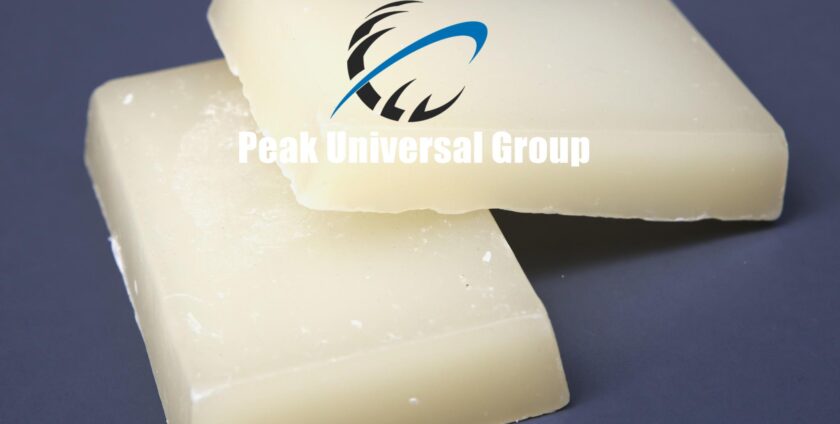
Slack Wax; Its Uses, Applications, Advantages & Disadvantages, and Price Factor
Slack Wax is an intermediate material obtained during the refining process of lubricating oils. It is a mixture of oil and wax, primarily composed of paraffin and microcrystalline waxes. Slack wax plays a crucial role in various industries due to its versatile properties and applications.
This blog will provide an in-depth understanding of slack wax, its uses, applications, advantages, and disadvantages, along with the factors influencing its price.
Peak Universal Business is a prominent supplier of high-quality slack wax, ensuring reliable products for diverse needs.
( What is Slack Wax Uses? Applications, Advantages, Disadvantages, Price Factor, Quality Tests, Polishes and Coatings, Candle Manufacturing, Rubber and Tire Industry, Emulsions and Inks, Industrial Lubricants, Textile Industry, Versatility, Quality and Purity, Melting Point Test, Quality Tests, Crude Oil Prices)
What is Slack Wax?
Slack wax is a crude wax containing a high percentage of oil, typically ranging from 5% to 20%. It is derived from the dewaxing process of petroleum-based lubricating oil production.
The dewaxing process involves chilling the oil to crystallize the wax, which is then separated and collected as slack wax. Depending on the oil content and refining process, slack wax can be categorized into two main types: light slack wax and heavy slack wax.
Production Process
- Dewaxing: Lubricating oil is chilled to crystallize the wax content.
- Filtration: The crystallized wax is separated from the oil through filtration or centrifugation.
- Slack Wax Collection: The separated wax, containing a significant amount of oil, is collected as slack wax.
- Further Processing: Slack wax can be further refined to produce paraffin wax, microcrystalline wax, or other wax products.
Uses of Slack Wax
Slack wax has a wide range of uses across various industries due to its unique properties. Some of the primary uses include: Candle Manufacturing, Polishes and Coatings, Rubber and Tire Industry, Emulsions and Inks, Industrial Lubricants, Textile Industry.
- Candle Manufacturing: Slack wax is a key ingredient in candle production, providing the necessary wax content and improving the burning quality.
- Polishes and Coatings: It is used in the formulation of polishes and coatings for floors, furniture, and automobiles, enhancing shine and providing protective layers.
- Rubber and Tire Industry: Slack wax is used as an additive in rubber processing and tire manufacturing, improving the flexibility and performance of rubber products.
- Emulsions and Inks: It is used in the production of emulsions and printing inks, providing the required consistency and stability.
- Industrial Lubricants: Slack wax serves as a base material for various industrial lubricants, reducing friction and wear in machinery.
- Textile Industry: It is used in textile processing for softening and finishing fabrics, enhancing their texture and appearance.
Applications of Slack Wax
1. Candle Manufacturing
- Wax Blends: Slack wax is often blended with other waxes, such as paraffin wax and beeswax, to produce candles with desirable properties like smooth burning, improved scent throw, and better mold release.
- Additives: It is used as an additive in candle formulations to enhance the melting point, burning time, and overall performance of the candles.
2. Polishes and Coatings
- Floor Polishes: Slack wax is used in floor polishes to provide a high-gloss finish, protect against wear and tear, and enhance the longevity of flooring materials.
- Furniture Polishes: It is incorporated into furniture polishes to improve shine, protect surfaces from moisture, and enhance the overall appearance of wooden furniture.
- Automotive Coatings: Slack wax is used in automotive coatings to provide a glossy finish, protect against environmental damage, and improve the durability of vehicle exteriors.
3. Rubber and Tire Industry
- Processing Aid: Slack wax is used as a processing aid in rubber manufacturing, improving the flow and molding properties of rubber compounds.
- Tire Manufacturing: It is used as an additive in tire formulations to enhance the flexibility, performance, and longevity of tires.
4. Emulsions and Inks
- Emulsifiers: Slack wax is used in the production of emulsions for various applications, including paints, coatings, and adhesives, providing stability and consistency to the final product.
- Printing Inks: It is used in printing ink formulations to improve the viscosity, drying time, and overall performance of the inks.
5. Industrial Lubricants
- Base Material: Slack wax serves as a base material for various industrial lubricants, providing the necessary lubricity and reducing friction and wear in machinery.
- Additive: It is used as an additive in lubricant formulations to enhance the performance and longevity of industrial equipment.
6. Textile Industry
- Fabric Softening: Slack wax is used in textile processing to soften fabrics, providing a smooth and luxurious feel.
- Finishing Agent: It is used as a finishing agent to improve the appearance, texture, and overall quality of textile products.
Advantages of Slack Wax
- Versatility: Slack wax is a versatile material with a wide range of applications across various industries, making it a valuable commodity.
- Cost-Effective: Compared to fully refined waxes, slack wax is more cost-effective, making it an economical choice for many applications.
- Enhanced Performance: Slack wax improves the performance of products like candles, polishes, and coatings, enhancing their quality and durability.
- Improved Lubricity: In industrial applications, slack wax provides excellent lubricity, reducing friction and wear in machinery and equipment.
- Consistency and Stability: In emulsions and inks, slack wax provides consistency and stability, ensuring high-quality and reliable performance.
Disadvantages of Slack Wax
- High Oil Content: The high oil content in slack wax can limit its use in certain applications where lower oil content is required.
- Processing Requirements: Slack wax often requires further processing and refining to meet specific application requirements, which can add to the overall cost.
- Limited Applications: Some industries may require more refined wax products, limiting the use of slack wax in certain high-end or specialized applications.
- Storage and Handling: Slack wax can be sensitive to temperature changes, requiring proper storage and handling to maintain its quality and performance.
Price Factors of Slack Wax
The price of slack wax can be influenced by various factors, including:
- Quality and Purity: Higher quality slack wax with lower oil content and fewer impurities generally commands a higher price.
- Supply and Demand: Market dynamics, such as supply and demand, can significantly impact the price of slack wax. Limited supply or high demand can drive prices up.
- Crude Oil Prices: Since slack wax is a byproduct of petroleum refining, fluctuations in crude oil prices can affect its cost.
- Refining and Processing Costs: The cost of refining and processing slack wax can also influence its final price.
- Geographical Location: The price of slack wax can vary based on geographical location, transportation costs, and regional market conditions.
- Supplier Pricing: Different suppliers may offer varying prices based on their production capabilities, quality standards, and market positioning.
Quality Tests for Slack Wax
Ensuring the quality of slack wax is crucial for its performance in various applications. Some common quality tests include:
- Oil Content Test: Measures the percentage of oil present in slack wax, determining its suitability for specific applications.
- Melting Point Test: Determines the temperature at which slack wax melts.
- Penetration Test: Measures the hardness or softness of slack wax.
- Viscosity Test: Evaluates the fluidity of slack wax at different temperatures.
- Color Test: Assesses the color of slack wax.
Environmental Considerations
The production and use of slack wax have environmental implications. Efforts are being made to minimize the environmental impact through the following measures:
- Emission Control: Modern production facilities implement emission control technologies to reduce air pollution.
- Recycling: Using recycled materials in slack wax production reduces waste and environmental footprint.
- Sustainable Sourcing: Ensuring that raw materials are sourced from environmentally responsible suppliers.
- Energy Efficiency: Implementing energy-efficient processes to reduce overall energy consumption and emissions.
Future Prospects
The future of slack wax looks promising with advancements in technology and increased focus on sustainability:
- Innovative Production Methods: Research is ongoing to develop more efficient and environmentally friendly production methods.
- Green Slack Wax: Development of eco-friendly variants that use sustainable raw materials and have lower carbon footprints.
- Enhanced Performance: Continuous improvements in the properties of slack wax to meet evolving demands.
- New Applications: Exploration of new applications and markets for slack wax.
Peak Universal Business: As a Slack Wax Supplier
Peak Universal Business is a leading supplier of slack wax, offering high-quality products that meet industry standards. Their expertise in sourcing, production, and distribution ensures that clients receive reliable and consistent slack wax for their projects. Whether for candle manufacturing, industrial lubricants, or textile processing, Peak Universal Business provides tailored solutions to meet specific needs.
Conclusion
Slack wax is a versatile and essential material in various industrial applications. Its unique properties make it ideal for a wide range of uses. Despite some disadvantages, its benefits outweigh the drawbacks, making it a preferred choice in many industries. With a reliable supplier like Peak Universal Business, clients can be assured of the quality and performance of slack wax for their projects.
What is Slack Wax Uses and Applications of Slack Wax? Advantages of Slack Wax, Disadvantages of Slack Wax, Price Factor of Slack Wax, Quality Tests, Polishes and Coatings, Candle Manufacturing, Rubber and Tire Industry, Emulsions and Inks, Industrial Lubricants, Textile Industry, Versatility, Quality and Purity, Melting Point Test, Crude Oil Prices.
You can Read More about Slack Wax Here:
- What is the Application of Slack Wax?
- Slack Wax & Its Applications in Rubber Industry
- Slack Wax for Rubber & Tire Industry
- Properties and Uses of Heavy Slack Wax 8-12%
- Slack Wax vs Petroleum Jelly: Its Uses & Applications
If you have any other query or question you want to ask, please don’t hesitate to Contact Us.
- 0 comment
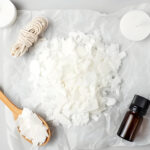
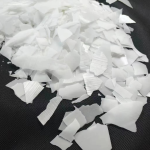
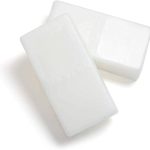
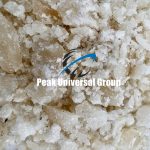
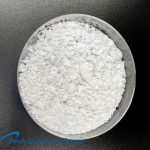
Leave a Reply